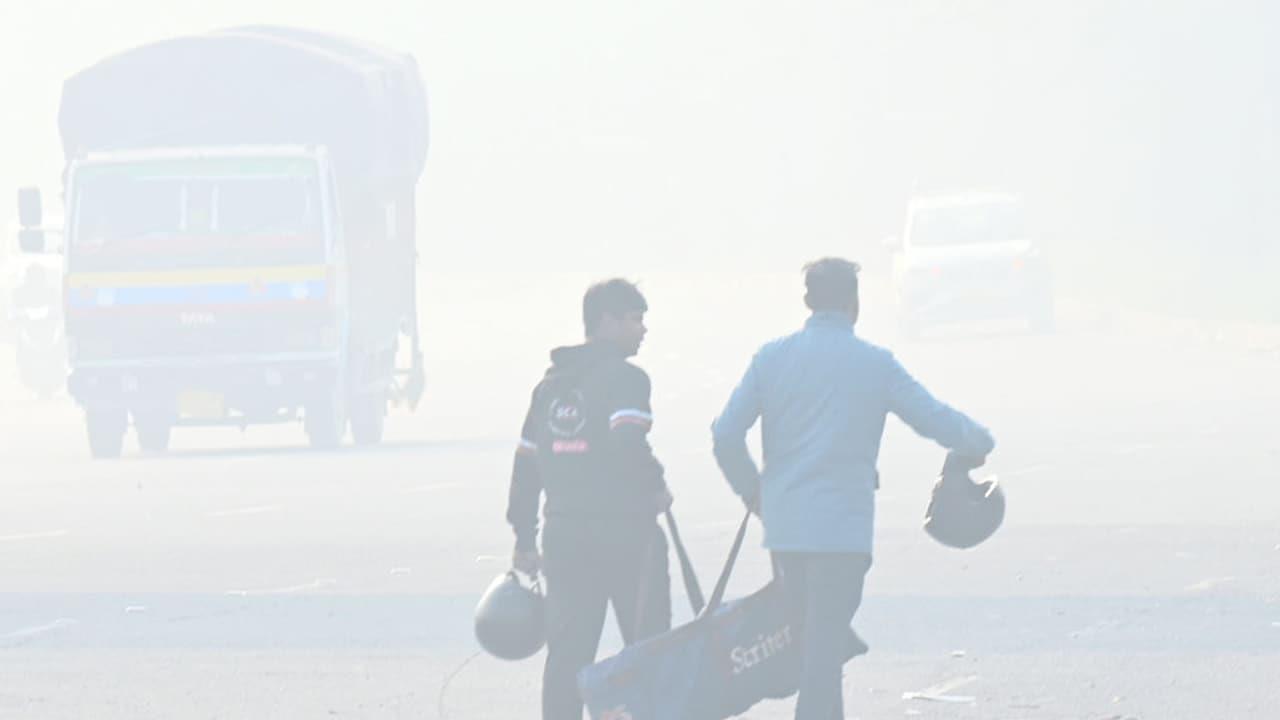
Delhi's Air Quality Worsens: Why AQI Has Hit 'Severe' Levels And What GRAP Stage III Means
Delhi's Air Quality Index (AQI) shot up dramatically from 362 on Monday to 428 by Tuesday afternoon, crossing into 'severe' territory for the first time in 2025. By Wednesday morning, the reading stood at 413, indicating the pollution crisis continues unabated. The Commission for Air Quality Management invoked Stage III of the Graded Response Action Plan (GRAP), imposing strict restrictions on construction activities, vehicular movement, and shifting primary school classes to hybrid mode Central Pollution Control Board uses a scale to measure air quality, ranging from good (0-50) to satisfactory (51-100), moderate (101-200), poor (201-300), very poor (301-400), and severe (401-500). Official forecasts suggest a slight improvement to the 'very poor' category on Wednesday. However, residents should expect the thick smog and hazardous conditions to persist in the near term.
Areas Worst Affected
Air quality varied dramatically across Delhi, with some neighborhoods experiencing critically dangerous pollution levels. Wazipur recorded the highest reading at 458, followed closely by Bawana at 451, Chandni Chowk at 449, Mundka at 444, Burari at 439, and Anand Vihar at 438. Other severely affected areas included Sonia Vihar at 434, ITO at 433, RK Puram at 431, Dwarka Sector-8 at 424, JLN Stadium at 421, Pusa at 418, and Okhla Phase-2 at 410. Even the relatively better areas like Lodhi Road, which recorded 304, remained in the 'very poor' category, showing the widespread nature of the crisis. Neighboring cities also struggled, with Noida registering a severe AQI of 404 and Gurugram at 368 in the very poor range. When pollution reaches 'severe' levels, it doesn't just affect vulnerable groups. Even healthy people experience health impacts, while those with pre-existing respiratory conditions face serious complications. The current readings place Delhi firmly in the most dangerous category, where breathing the air itself poses significant health risks.
According to authorities, several factors combined to create this crisis. Weather conditions played a crucial role, with calm winds preventing pollutants from dispersing and stagnant atmospheric conditions trapping them close to the ground. Adverse winter weather patterns intensified the problem, creating an environment where pollution accumulated rather than dissipated. Since Diwali celebrations, Delhi's air quality has consistently remained in 'poor' or 'very poor' categories, occasionally slipping into 'severe' levels. The latest spike represents an accumulation of these ongoing issues rather than a single isolated event. Chief Minister Rekha Gupta also pointed out that Delhi's air quality is significantly influenced by pollution from neighboring cities, creating an interconnected regional challenge that requires coordinated responses across multiple urban centers.
What is GRAP?
GRAP stands for Graded Response Action Plan, a set of emergency measures designed to combat rising air pollution in Delhi-NCR. It works like an escalating alert system, with restrictions becoming progressively stricter as air quality worsens. The Stage III measures introduce comprehensive restrictions across multiple sectors. A complete ban on construction and demolition work has been imposed across Delhi-NCR, accompanied by the shutdown of stone crushers and mining operations. Vehicle restrictions include a prohibition on BS-III petrol and BS-IV diesel four-wheelers in Delhi, Gurugram, Faridabad, Ghaziabad, and Gautam Budh Nagar, though exemptions are provided for persons with disabilities. Non-essential diesel-operated medium goods vehicles with BS-IV or older standards are also restricted in Delhi. Educational institutions have been directed to shift classes up to Grade V to hybrid mode, offering both physical and online instruction. Parents and students can choose online education where available, with the directive applying to all government, government-aided, and private schools under various administrative bodies. All measures from GRAP Stages I and II remain active alongside these new Stage III restrictions, creating a comprehensive framework of pollution control measures.
Delhi Chief Minister Rekha Gupta described the response as "mission mode" with zero delays. The administration has deployed water sprinklers across the city, implemented dust mitigation efforts, intensified regular street sweeping, ensured efficient garbage collection, and activated smoke control initiatives wherever required. The Chief Minister conducted a review meeting at the Secretariat to monitor pollution levels and coordinate response strategies across departments, emphasizing that Delhi's challenges are linked to activities in surrounding cities and require comprehensive regional cooperation.
Legal Disclaimer:
MENAFN provides the
information “as is” without warranty of any kind. We do not accept
any responsibility or liability for the accuracy, content, images,
videos, licenses, completeness, legality, or reliability of the information
contained in this article. If you have any complaints or copyright
issues related to this article, kindly contact the provider above.


















Comments
No comment